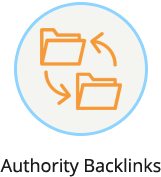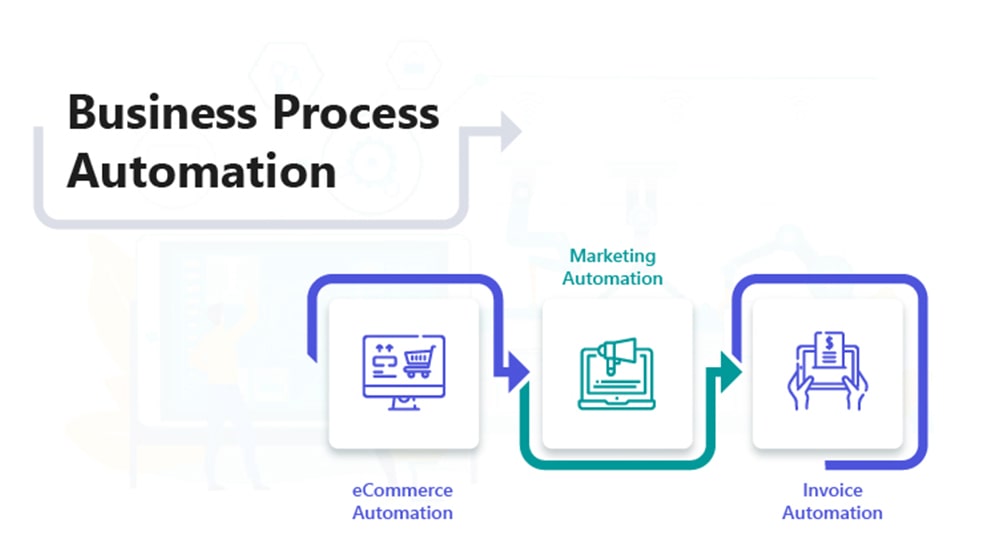Actionable SEO Techniques That Are Impacting Traffic Right Now
SEO, or
search engine optimization,
is a key element of a successful online marketing strategy that attracts more visitors, boosts user engagement, and generates more leads. A good SEO strategy includes in-depth content, smart incorporation of keywords, effective backlinks, consideration of RankBrain, optimization for voice search, and embedded videos, among other strategies. As search has become more complex, SEO experts have to be more rigorous than ever.
In this article, we will cover key actionable SEO techniques that are impacting traffic:
RankBrain and User Experience
Google RankBrain has been in the marketing news since its inception. Last year the tech giant revealed that the machine-learning artificial intelligence system was its third most important ranking factor. RankBrain is currently one of the top SEO techniques, especially with voice search exploding in the digital marketing landscape.
What is RankBrain?
Put simply, RankBrain measures how users interact with search results. An AI system powered by machine-learning algorithms, it helps Google quickly process search results, including the most uncommon queries. The original main functionality of RankBrain was to filter the queries that Google processed. A considerable percentage of Google searches are managed by the AI platform now. Additionally, Google recently started using RankBrain to directly rank web pages and that implementation was a success.
Google RankBrain uses algorithms and high-level language semantics knowledge to understand how and why people search. The conclusions are applied to future search results. The platform also tweaks the algorithm on its own. RankBrain keeps track of search interactions, using the insights revealed to move some results up in the rankings.
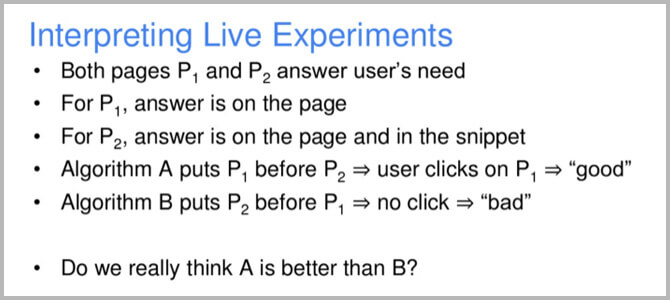
Source: Shared by one of Google’s engineers to explain RankBrain
As indicated in the above example, RankBrain sometimes ranks pages higher than they actually should be from a usability and efficiency perspective.
How will RankBrain impact SERPs (search engine result pages)?
RankBrain is a search query refinement tool and a top Google ranking factor. It continually improves the top results using the keywords input by every searcher. Here’s an example demonstrating how RankBrain impacts SERPs:
A person searches for “best coffee shops in Texas.” RankBrain determine that “best coffee in Texas” is more commonly searched and that its results are relevant to the user’s needs. It proceeds to display the search results for the latter phrase.
Therefore, RankBrain’s understanding of how people search can affect the results, which in turn impacts rankings.
Two primary points of focus for RankBrain are dwell time and click-through rate.
What is Dwell Time?
Dwell time starts for a person after they click from Google search, as they arrive at certain page. It ends when the person returns to Google. The higher the dwell time, the better chance a page has of moving up the search engine rankings.
RankBrain measures dwell time and changes the results accordingly. If a person leaves the site almost immediately (an extremely short dwell time), that is important as well. You need your bounce rate to be low if you want great search engine rankings. To improve your SEO and yield better rankings, prepare dedicated plans to increase dwell time and reduce bounce rate.
The average dwell time for top – 10 Google results is 3 minutes and 10 seconds. Ahrefs

What is Click Through Rate (CTR)?
Click-through rate (CTR) measures the number of times a post is clicked against the number of times it’s viewed. It is a performance metric in the form of a percentage. You can typically meet all your CTR targets if you appear in the first three search results. Click-through rates on Google can be seen via the Search Console within Google Analytics.
Organic CTR is regarded as the main RankBrain ranking signal, so make sure your meta descriptions are groomed perfectly to get more clicks. The titles should be persuasive and make good use of numbers. You should include power words in your title tags and leverage other techniques to make sure your posts are clicked. Try using brackets and parentheses: in one study, titles with brackets outperformed titles without brackets by 33%! Overall, if your page has an above-average CTR, you will get a ranking boost.
Make sure that both your CTRs and dwell times are as strong as possible. If they are excellent, then RankBrain will impact your ranking.
Become an SEO Jedi
Now that RankBrain is used increasingly, you may have to become an SEO Jedi.
How to become an SEO Jedi
Keep an eye on your CTR, dwell time and bounce rate
In the past 12 months, organic CTR has dropped 37%. Google is crowding out the organic search results with answer boxes, ads, carousels, and other elements. As a result, your pages have to be extremely persuasive and optimized to get clicks. It is very important to make sure that you work hard on optimizing organic CTRs especially since higher CTR and dwell time send such as strong message to Google. Great numbers in these metrics say that your webpage contains everything searchers want, which suggests that your page should be ranked higher. Also, the opposite of a strong dwell time high bounce rate can negatively impact your ranking. Your user experience (UX) must be impeccable as well.
CTR magnet method is the king
The click-through-rate magnet method helps you quickly get more traffic to your website. This method is centered on the basic knowledge that clicks in the SERPs impact Google ranking. The CTR magnet method, or click magnet method, is a simple process. You can easily implement it to attract more traffic to your site by increasing your CTR percentage.
Implement the click magnet method in 3 steps:
- Find Google Ads: Determine the keywords that you want to use and have a look at the ads. Write down the most commonly used terms and phrases.
- Integrate phrases: Include the commonly used terms in your SEO title and meta description.
- Get the clicks: Do your research putting the top terms, in your titles and meta descriptions. The third step of getting more clicks will take care of itself.
Comprehensive, in-depth content wins
In-depth content is not only good for SEO but the overall performance of your website, including user engagement. After all, lengthy, informative content has the best potential to solve your readers problems (since many will want more in-depth commentary, as provided in this article). Also, search engines loves in-depth content. Google, with its exceptionally high technological IQ, wants websites to put ideas into context and that context is created through volume.
In search engine results pages, top results cover the entire topic in-depth.
Google is constantly getting better at understanding what a searcher wants. This evolved understanding is making it easy to identify what content satisfies a searcher. In order to attract organic traffic, in-depth content is crucial. After all, Google is on a journey to become an ever-more-refined “knowledge engine.”
Providing detailed information to customers is always a good idea. It even helps marketers. Lengthy, informative content does not just yield higher search engine rankings. It also helps visitors get more information about your brand leading them toward conversion.
To ensure your informative content works, include meta descriptions that accurately exhibit the unique value of your content. Also, write catchy yet accurate titles.
How to write comprehensive, in-depth content
To write attractive, informative, and useful long-form content, your first step is to thoroughly research the topic. Then break the main topic into various segments, so that it is easy to explain each part of the article. Also, it is of utmost important to add relevant keywords, which you can do during initial composition or editing.
Add LSI keywords to your content
Latent semantic indexing keywords (LSI keywords) are semantically linked to the main keyword. LSI is a process used by the search engines to determine keywords associated with the main keyword. LSI keywords should be integrated into in-depth content to make the article more meaningful to the search engines. It is a proven way to boost organic traffic.
Example of LSI keywords
When you search the term “best restaurants in California” on Google, you will see auto-fill phrases that are linked to your main keyphrase. keywords in the descriptions of web-pages will be highlighted. All these LSI keywords are recognized by Google’s algorithm and are related to the original search phrase.
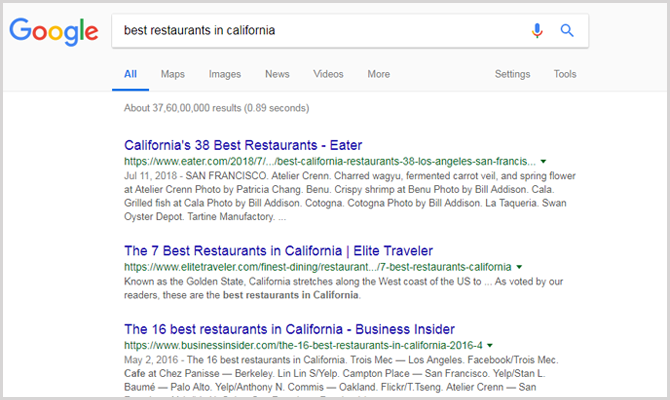
Use an LSI keyword generator tool
Knowing the importance of LSI keywords, you need to find the best LSI keywords for your in-depth content. With the help of an LSI keyword generator, you can easily gather all the relevant keywords for your content.
Listed below are some of the best LSI keyword generators:
- LSI Graph
- LSI Keywords
- Niche Laboratory Keyword Research Tool
- KWFinder
- Keys4Up
- Twinword Ideas
- Keyword Tool
- Semantic Link
- Ultimate Keyword Hunter
- Answer-The-Public
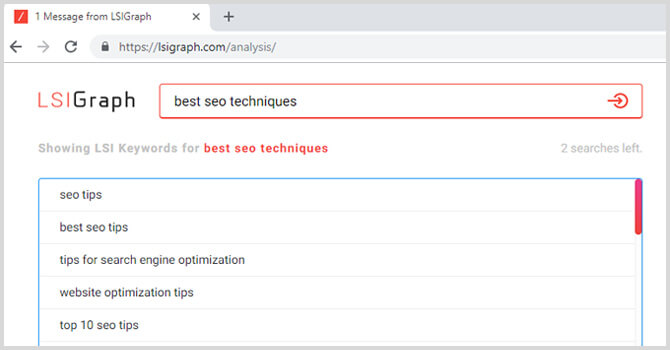
Google keyword planner to get LSI keyword ideas
A popular Google product, Google Keyword Planner is used to get traffic estimates for potential keywords. It also helps to know more keywords related to your primary ones. In that sense, this planner helps you gather LSI keywords related to your target keywords.
The best part about using Google Keyword Planner is that you don’t need to spend any money. Just create a free Google Ads account, access the tool, and start searching for relevant LSI keywords. It’s that simple!
Google giving priority to mobile- first indexing
Google will be using your site’s mobile version for indexing and to rank it on the search engine. The implication is that you have to ensure your website is suitable for mobile search. Increasingly, your design and content must be optimized for smartphones to rank well for both mobile and desktop searches. Ensure your site is responsive and designed perfectly for mobile users.
Today, 60% of Google searches are from mobile devices
Recent reports show that 3 in 5 Google searches are now requested through smartphones and tablets. Because of the exponential growth of mobile use, it is critical to implement responsive mobile versions of websites. With Google’s move to start mobile- first indexing, it’s becoming even more important for brands to optimize for mobile to rank higher in search. Plus, with more mobile searches, your user-friendliness improves as you become mobile-friendly.
Steps to prepare for Google’s mobile-first indexing:
- Display 100% of content that is present on your website’s desktop version to mobile visitors as well.
- Make sure that your website is responsive.
- Focus predominantly on the user experience of the mobile version of your website.
Visitors will not wait to hit the back button if they find it difficult to navigate your website. Plus, since we know RankBrain measures dwell time, make sure your site is flawless. - Continually analyze the mobile usability report in the Google search console.
Why use video content?
According to Cisco, 80% of all online traffic by 2021 will be through video content. That’s based on demand: 43% of people want to see more videos. As companies are realizing the importance of video, they are trying their best to create and curate optimized content of this type.
How can video content improve your SEO?
There are various reasons that video boosts SEO:
- YouTube (owned by Google) is already the world’s second largest search engine.
- YouTube videos posted by a brand build rapport with viewers. YouTube viewers can be converted into website visitors.
- Videos can be optimized to target specific keywords.
- Google has started prioritizing video: today, 55% of all Google Search results include video. In other words, more than half of search results contain at least one embedded video.
- Google is gradually integrating YouTube results into Google Images as well. For that reason, if your video is optimized properly, it may show up in the Images section.
Embedding video content
into text-based blog posts
Increased use of video content in blog posts is helping websites rise in the search engines. Adding videos to blogs not only increases the reach of the videos but also enhances the appeal of the blogs. Also, now that SEO experts have realized the importance of video content, they are finding new ways to add it to web pages and what’s better than embedding videos in blogs?
Some blog posting platforms (such as WordPress) enable companies to directly access embed codes from video hosting platforms (such as YouTube). The WordPress user just has to post the link in the editor to embed the video. Also, blogs that contain embedded videos generate more inbound links (backlinks).
Voice search influencing search results
Voice searches are increasing rapidly, especially after with rapid advances in AI. SEO experts should make full use of this impactful new technology. Voice-based search is the future; just consider the prevalence of Apple Siri, Google Voice, Amazon Alexa, and Microsoft Cortana. SEO experts have to start focusing more on voice searches and optimize their sites to address this growing need.
Voice search optimization (VSO) incorporates the use of conversational phrases, with keywords that answer natural language questions. Study up on natural language processing (NLP). Most of the voice search answers come from featured snippets, so make sure you create answers to questions (such as through FAQs) in order to steer conversions.
Here are some more reasons to focus on voice search:
- Two in five of adults (40%) do at least one voice search every day.
- A recent report found there are now 35 times more Google voice searches than in 2008.
- One in five mobile searches (20%) are now voice searches.
How to
optimize for voice search
One of the best ways to optimize for voice search is by using a question-and-answer format on web-pages that are specifically targeted for voice searches. It is believed that Google prefers pages containing all the answers that a searcher needs. Such pages appear on the top of the SERPs. Another key way to optimize for voice search is through featured snippets.
What are featured snippets, and how can they improve SEO?
Featured snippets are direct-answer results that show up in a box at the top of the search engine results page. A featured snippet contains a link to the source of the answer. If you can get your website to appear as a featured snippet, you will attract many more visitors to your site.
Featured snippets can garner a lot of traffic. It is one of the best techniques for voice SEO.
If a searcher is expecting a verbal reply after using voice search, they won’t get a lot of options in return. Only one result will be read out to the searcher, from the featured snippet.
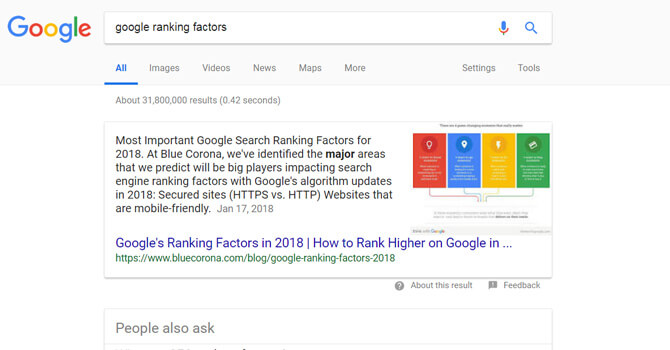
Quality content and high-authority backlinks are key factors
SEO is about quality content and high-authority links. Without quality content, you will never get links; and without link-building, you won’t reach the top of search. A backlink is a link to your website from an external site. Having a large quantity of backlinks is only helpful if they are of high quality: backlinks only improve SEO rankings if they are from high-authority sites. Remember that when external sites link to you, greater authority is directly proportional to the impact on your SEO.
The quality of your content must be high too. The content should not only be plagiarism-free but also highly engaging, in-depth, and optimized. Proper use of videos and voice search-based content gives your site an additional edge.
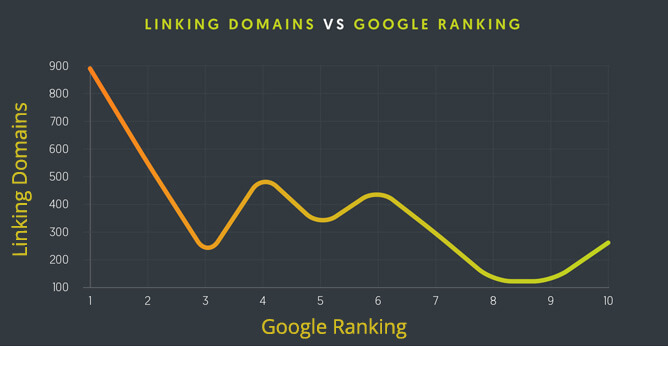
In order to write high-quality content, you need to perform comprehensive research. You also need to know both your target audience and competitors well. Your content should have the strength to attract readers and to retain them. It should persuade users to visit your site again.
Conclusion
If you aspire to reach the top of Google’s first page, you must implement the latest SEO techniques that impact traffic. These strategies include optimizing for RankBrain, improving your VSO, increasing dwell time, and making the site mobile-friendly. Knowing what you need to do to improve your ranking, the next steps are to prioritize, plan and implement.
Will you focus on improving your dwell time or optimizing for voice search first?
Let us know by leaving a comment below. Need help organizing and implementing these techniques? For in-depth analysis and guidance, email contact@epikso.com or book an appointment today.










